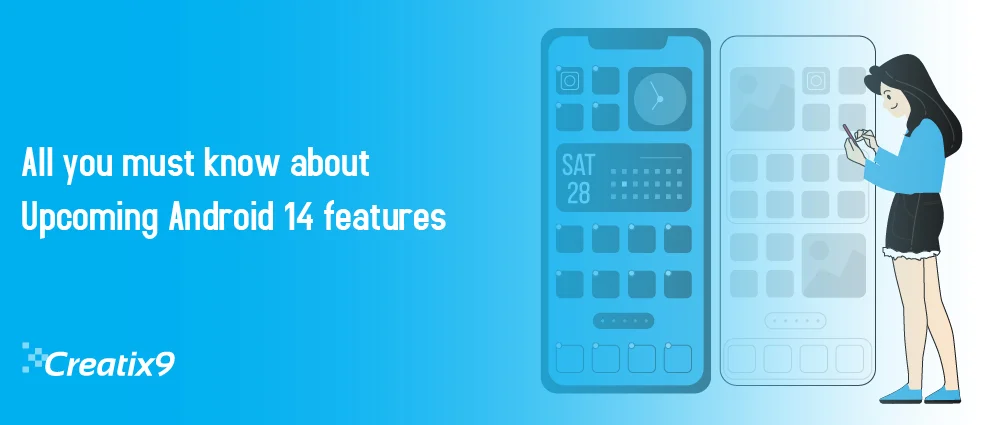
On October 4, 2023, Google revealed Android 14, marking its stable release. The initial recipients of this update are Google’s Pixel phones, with Pixel owners having the option to install it right away using our Android 14 installation guide. Users of smartphones from other Android manufacturers will have to exercise some patience until their respective OEMs release their customised versions of Android 14.
So here, our Android app developer will take you through the key features of Android 14 and explore what it has to offer.
Android 14: Name and release date
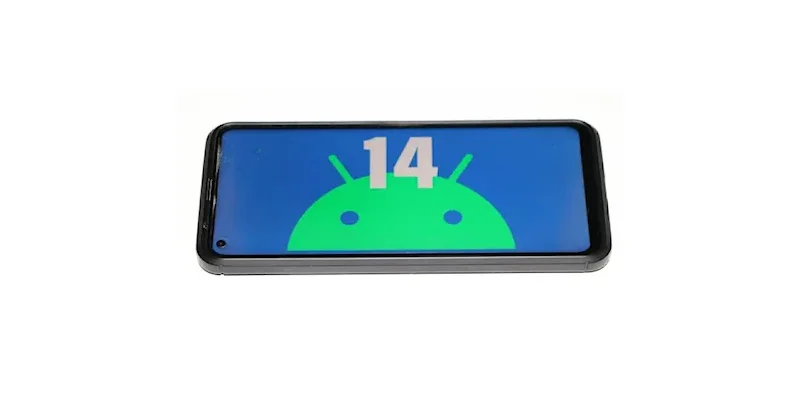
In the past, Google named its Android versions after sugary treats like Nougat, Oreo, and Pie. Android 14 is now simply referred to as Android 14. However, Google still uses dessert-themed codenames internally, and for Android 14, it’s known as “Upside Down Cake.”
Google initiated the rollout of the stable Android 14 alongside the Pixel 8 series. This update will also reach devices such as the Pixel 4a 5G and newer, with the Pixel Tablet, all at once.
It’s worth noting that OEMs typically take some time to adapt and release new Android versions due to their need to incorporate their own software skins. Google has confirmed that Android 14 will become available on phones from various manufacturers, including Sony, Realme, iQOO, Samsung, OnePlus, Nothing, Tecno, OPPO, Sharp, Xiaomi, Vivo, and OnePlus later in the year.
Android 14 Easter egg
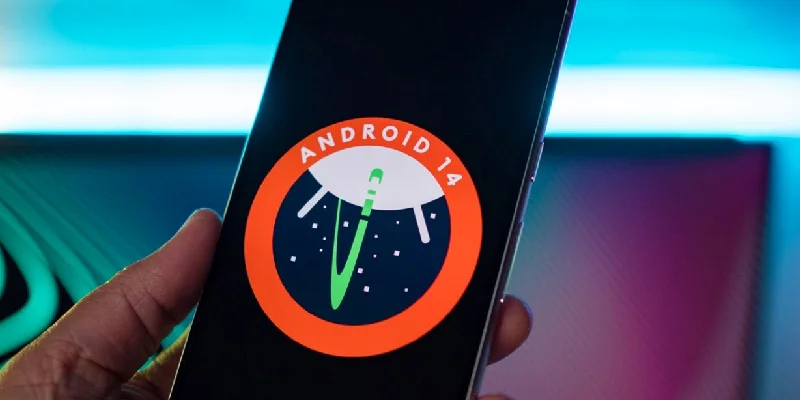
As for Android 14, the Easter egg was made public with the release of Android 14 beta 4 on July 11. It takes idea from the official Android 14 logo, which looks like the Apollo 14 patch. It centres around the theme of space travel.
Android 14 Accessibility Enhancements
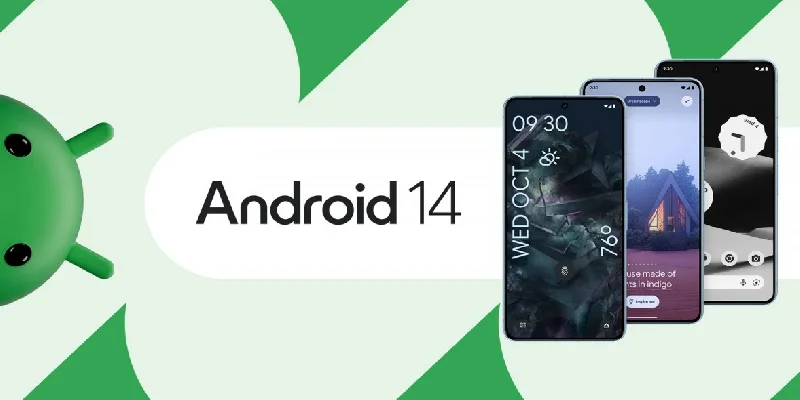
Larger Font Sizes: In Android 14, users can now increase font sizes up to 200%, a significant boost from Android 13’s 130% limit. Non-linear font scaling ensures already large text remains unaffected, while smaller text below headings can grow larger.
Notification Alerts for Hearing Impaired: Android 14 introduces notification alerts for those who are hard of hearing. Users can utilise the display flash, camera flash, or both to receive visual notifications. Display flash colour can be customised, but flash patterns are fixed as “on” or “off.”
Language Improvements: They have upgraded their Grammatical Inflection API to provide better support for gendered languages like French and German. With this, developers can now easily fine-tune language settings on a per-app basis. They can customize their app’s language handling based on specific regions and even conduct A/B experiments with ease.
Regional Preferences: Android 14 accommodates regional preferences, such as using Celsius for temperature units and making Monday the first day of the week for European users in the US.
Battery Optimisation Features in Android 14
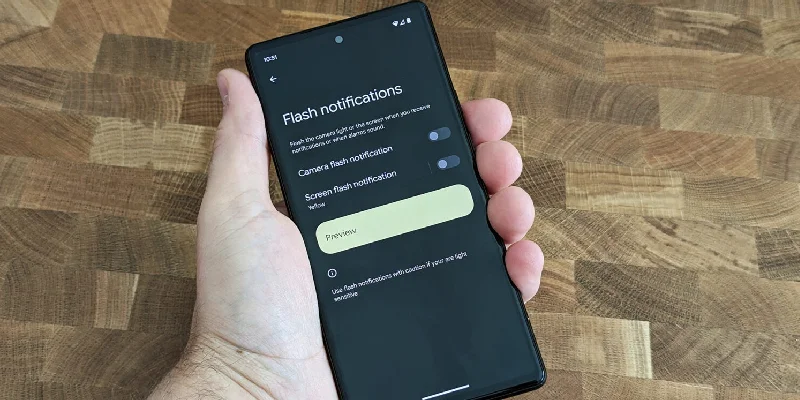
Efficiency Improvements: Android 14 focuses on battery life and optimises background tasks through foreground services and job scheduler APIs. User-initiated data transfer jobs simplify handling uploads and downloads, mainly on Wi-Fi only.
Precise Alarm Permission: To maintain battery efficiency, new “schedule exact alarm” permission is required for non-clock and non-calendar apps.
Screen Time Tracking: The “screen time since last full charge” feature returns to give users a more accurate measure of their Phone’s battery performance.
Battery Information: Users can access additional battery details, including manufacturing date and cycle count, in Settings > About Phone> Battery Information (availability may vary).
Privacy and Security Features in Android 14
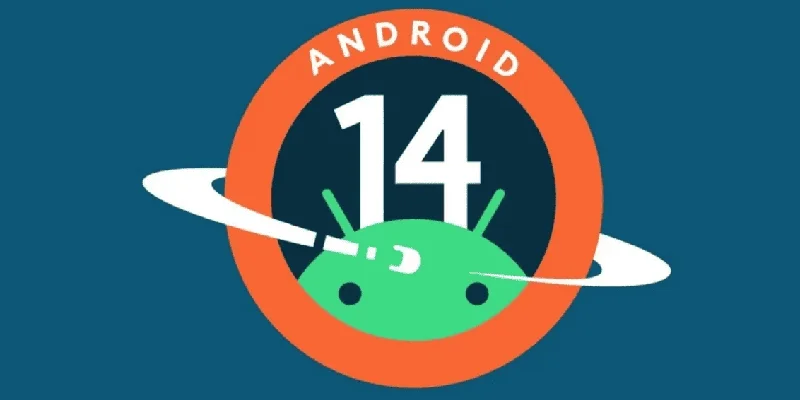
App Compatibility: Android 14 restricts the installation of older apps designed for Android 5.1 Lollipop APIs and earlier to enhance security against potential vulnerabilities and malware.
Selective Photo and Video Access: Android 14 offers finer control over photo and video access permissions, allowing users to grant access only to specific media.
Enhanced PIN Privacy: Users can disable PIN entry animations to deter shoulder surfers from observing and memorising PINs. The “OK” button is removed for six-digit or longer PINs, providing quicker access to the device.
Data Sharing Transparency: Android 14 notifies users of any app permissions or privacy policy changes, ensuring transparency and informed decisions.
Other Security Enhancements: Behind the scenes, Android 14 reinforces security by addressing issues with the intent system, dynamic code loading, and improving passkey support, advancing toward a password-less future.
Developer-Centric Enhancements Features in Android 14
In Android 14, Google continues its long-standing efforts towards cross-device compatibility. This time, it focuses on aiding Android app developers with new features like window size classes and sliding pane layouts. It enables apps to smoothly adapt to various screen sizes. As well, Google introduces a preview of its cross-device SDK. It simplifies the process to build apps that perform well across diverse devices and form factors (configuration, size, or physical arrangement of a computing device).
Integrated Health Connect
Android 14 comes with its own central hub for collecting health data from multiple fitness and health applications – Health Connect. Indeed, it is known to include data from brands like Samsung, Peloton and Fitbit. This update makes Health Connect part of the pre-installed system, which means one can upgrade it without the need to install it manually each time.
Customisation Feature in Android 14
At Google I/O 2023, the company shown three innovative ways to personalise wallpapers on Android 14. Firstly, users can create a simulated parallax effect from their own images. Secondly, a new Emoji wallpaper creator allows users to select their preferred Emoji and customise colours for a vibrant cartoon-themed wallpaper. Lastly, a generative AI system generates unique wallpapers.
While the first two options are open on all Android 14 devices, the generative AI system is exclusive to the Pixel 8/Pixel 8 Pro. Android 14 also introduces a minimalist monochromatic theme.
Lock Screen Customisation: Traditionally less customisable than the home screen, Android 14 changes the game by allowing extensive lock screen customisation. Users can personalise fonts, widgets, colours, and formats, even adding shortcuts to the lower corners for quick access.
Minor Confirmed Updates
Android 14 introduces several smaller but significant updates, enhancing user experience:
- Android 14 now allows lossless audio during wired headphone usage.
- Support for 10-bit HDR (Ultra HDR); with this, you can have better photo quality with more vibrant colours and excellent contrast.
- A new setting in Android 14 QPR1; users can choose how apps behave when the Pixel Fold is closed, keeping apps open if desired.
- Updates to Camera2 and CameraX extensions; users will get a handling of longer processing times, benefiting use cases like low-light photography.
- Users can adjust the aspect ratio of apps for full-screen display on foldable devices and tablets.
- Enterprise and government users can now restrict devices from falling back to insecure 2G standards.
- Users can disable support for “null-ciphered” cellular connections, opting for encrypted ones.
- When connecting a Bluetooth device to an Android 14 device, users can select its “audio device type” from Headphones, Speaker, Hearing Aid, Car Kit, or Other options.
Anticipated Features in Android 14
Enhancements to Find My Device
In Android 14, Google plans to introduce a feature akin to Apple’s Find My Device network. This innovation let users to trace their devices —even when switch off. Google is reportedly developing its own Find My Device network that uses Bluetooth connectivity among nearby Android devices to determine the approximate location of the powered-off device. Android 14 QPR1 is where clues for this feature were found.
Floating Search Bar for Pixel Launcher
In Android 14, for the Pixel Launcher—google is testing a floating search bar. When activated, this feature relocates the search bar above the keyboard within the app drawer instead of its usual position at the top of the screen. It overlays both Gboard and SwiftKey, potentially benefiting other Android keyboard apps.
Exploring Repair Mode
Google is currently studying the idea to open a new repair mode for Pixel devices— a reminiscent of the Maintenance Mode in Samsung Galaxy devices. When a phone is sent in for repairs, this mode could simulate a factory reset. Google might employ the Dynamic System Updates (DSU) mechanism introduced in Android 10.
Screen Search Gesture
Android 14 may introduce a screen search gesture reminiscent of Google Now on Tap, which was phased out with the launch of Google Assistant. Evidence found in Android 14 QPR1 hints at the possibility of users; they can activate a screen search when they press and hold the navigation handle.
Satellite Connectivity Support
Google is set to introduce native support for satellite communication in Android 14, aligning with announcements from Qualcomm, HUAWEI, and T-Mobile. While specific capabilities remain unclear, this development should ease integration for smartphone brands and service providers. Whether 2023’s Pixels will adopt this feature is yet to be confirmed.
Android Phones as Webcams
Android 14 now allows Android phones to be used as webcams, but it’s up to device manufacturers to decide whether to include this feature. This could eliminate the need for third-party apps to turn your Phone into a webcam, simplifying the process.
Predictive Back Gesture
To address the unpredictability of Android’s back gesture, Google is reportedly working on a predictive back gesture feature for Android 14. Unlike its optional predecessor in Android 13, this feature will offer users a visual preview of the destination when executing the back gesture.
App Cloning
Evidence suggests that Google is working on an app cloning feature for Android 14. It potentially allows users to clone apps without relying on OEM-specific support. While its inclusion in the final build remains uncertain, it’s an ongoing development.
Bloatware Finder
Google aims to combat bloatware with a feature called “Apps installed in the background” in Android 14. This feature reveals and allows users to uninstall apps that have been downloaded in secret. Activation may require hidden developer flags, making its inclusion in the stable Android 14 release uncertain.
App Pair Saves
Android 14 introduces “App Pair,” enabling users to run two apps side by side in a split-screen view. Also, for convenient relaunching, it may save app pairs and build shortcuts on the home screen.
Improved Taskbar for Tablets and Foldables
Mishaal Rahman, an Android expert, revealed indications that Google is working on several taskbar changes. These consist of giving users the option of a permanent or temporary taskbar, adding a search bar to the taskbar, showing recently used apps (in desktop mode), and more. The Pixel Fold, Pixel Tablet, and other OEM devices can access these improvements, which are already available in Android skins from other manufacturers, in the Android 14 QPR1 release.
Spotted and Rumoured Android 14 Features
- Android 14 may introduce the capability to automatically link a URL with a shared web page screenshot. Whether this will be part of Android 14 or add in a Pixel Feature Drop remains uncertain.
- Reports suggest that Android 14 will incorporate Fast Pair functionality into the Connected Devices menu, simplifying the process of pairing and connecting Bluetooth devices.
- Exclusive to Armv9 silicon, Android 14 will feature advanced memory protection mechanisms to bolster security and protect against potential exploits.
- Android 14 may introduce an “update ownership” feature, enabling third-party app stores to manage automatic updates for specific apps exclusively. Google might utilise this feature for select Google apps as well.
- Reports indicate that Google is optimising the lock screen interface for smartphone landscape mode, enhancing user experience in this orientation.
Top Android 14 QA’s
What are the Improvements to Camera Capabilities in Android 14?
Android 14 will enhance camera capabilities through updates to the Camera2 and CameraX extensions. These updates will enable apps utilising these extensions to handle longer processing times effectively.
Is Upgrading to Android 14 worth it?
Upgrading to Android 14 is highly recommended now that the stable release is available, offering a range of new features and improvements.
When will my smartphone get Android 14?
Google Pixel phones typically receive stable Android releases on the day of their release. However, users with phones from other brands like Samsung, Xiaomi, OnePlus, Motorola, and more may need to wait for the update to become available.
Conclusion
Here are some of the Android 14 features you should know. As we take the update, we shall inform you of any additional features identified.
Therefore, to create an app, get our UK Android app developer.
Hire our team for cost-effective cross-platform app development in the UK because we will ensure that we do just the right thing, listening to your ideas and doing our work accordingly.
Our UK custom mobile app development services provide 100% first-class custom applications.
Creatix9 – a Professional Digital Agency from the UK.

